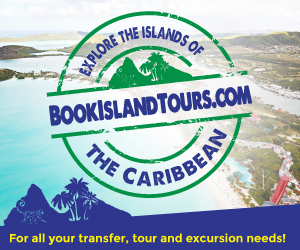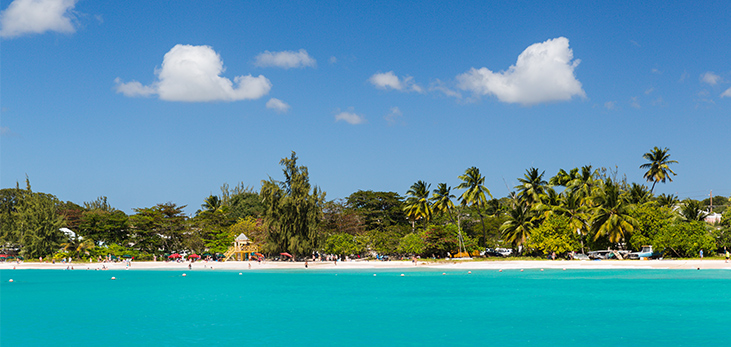|
Carlisle BayCarlisle Bay is a natural crescent shaped harbour encompassing Bridgetown, Barbados' capital and several beaches, situated on the South West Coast of Barbados, in the parish of St. Michael, with Bridgetown and Bridgetown Harbour, Brandons Beach and Brighton Beach to the north, and Pebbles Beach and Needham's Point to the south. Carlisle Bay's name derives from James Hay (the 1st Earl of Carlisle) who, as the second Lord Proprietor of Barbados, claimed Barbados in 1627 on behalf of King Charles I of England. Carlisle Bay is an appealing, tranquil bay, with one of the largest beaches on the island and sparkling calm, shallow waters. Home to the ‘Boatyard’, many cruise ship passengers can spend the entire day here. Old or young, there is something for all ages at Carlisle Bay - exercising, jogging, swimming, snorkelling, body or 'boogie' boarding, eating, drinking, or simply relaxing in a beach chair watching the yachts and other small vessels anchored in the bay as they gently roll from side to side on the sea. With car parking facilities, good access for visitors with mobility difficulties, toilets, showers and changing rooms, and a lifeguard on duty, you will not want to leave Carlisle Bay in Barbados. Carlisle Bay in Barbados has also been developed into a very popular and oft frequented underwater marine park. It is especially well known in Barbados for its scuba diving opportunities, with no less than six shipwrecks in close proximity: Berwind, a 70ft long First World War French tug boat sunk by her own crew in 1919; Ce-trek, a derelict cement boat that was sunk in 1986; Eillon, a 110ft former drug boat freighter that was sunk in 1996 as part of the marine park; Bajan Queen, Barbados' first tug boat when Bridgetown harbour was built in the 1960s, was sunk in 2002; Cornwallis, a Canadian freighter sunk by German u-boat torpedo during the Second World War; and a naval landing barge originally found in Carlisle Bay in Barbados. Beginner to expert divers will not be disappointed in their search for hidden underwater treasures if they visit Carlisle Bay in Barbados. The sunken vessels are the source of various relics and ship paraphernalia, and anchors, pylons, bottles, cannons and cannon balls mark out a trail from one ship to another. The wrecks also provide habitats for a proliferation of sea life, including sea horses, rays, barracudas, octopus, reef squid, mackerel, moray eel and frog fish, as well as the more unusual mantis shrimps, lettuce slugs, and pencil stars.
|



